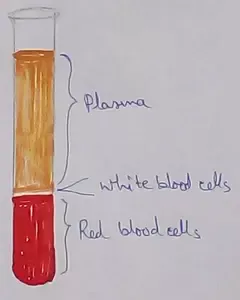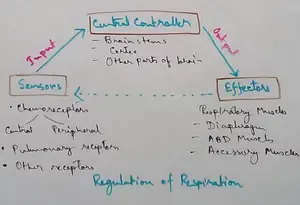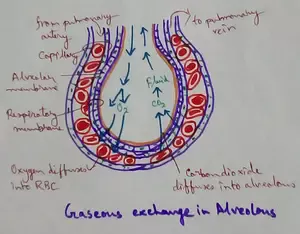Kingdom Protista
Protists are the first eukaryotes to evolve about 1000 million years back. Protists are all unicellular and colonial eukaryotes except green and red algae. They are broadly divided into- photosynthetic, slime moulds and protozoans.
Leeuwenhoek was the first to see and sketch protozoan’s protists including Vorticella and Giardia.
Characteristics of protists are:
*They are solitary unicellular, colonial unicellular, eukaryotic organism.
*They are mostly aquatic organism.
*A well defined nucleus (uninucleate, binucleate or multinucleated). Genetic material is RNA, enclosed by nuclear envelope, complexed with protein with distinct chromosome.
*Almost 95% of the protists are consisting of phytoplankton and 80% of the total photosynthesis is carried out by photosynthetic protists.
*If cell wall is, it is made up of cellulose.
* Cytoplasm contains ribosomes, a variety of organelles such as mitochondria, plastid, lysosome, cytoskeleton, endoplasmic reticulum and Golgibodies. Some contains centriole and ribosomes are 80S and 70S.
*Cytoplasm is always in motion which is called cytoplasmic streaming or cyclosis.
*Locomotory organs are flagella, cilia, pseudopodia contractions, mucilage and extrusion.
*Food reserve is starch, glycogen, paramylon, chrysolaminarin and fat.
*Asexual reproduction is quite common and occurs through budding, binary fission, multiple fission, plasmotomy, sporulation, Cyst formation etc.
*Sexual reproduction occurs with the help of nonjacketed gametangia by meiosis and karyogamy.
*Three types of life cycle occur in protists are- plant, animal and fungal.
*Protistans serve as the linkage between monerans and rest of the kingdom.
*Mitotic apparatus is formed during cell division.
*No embryo is formed.
Protists can be divided into-
1. Euglenophyta - This include Euglinoids organism. This phylum category includes flagellate protists of freshwater, damp soils. Previously they were included in phytomastigophora by zoologist. They have tinsel and tactellum type of flagellum with the roots developing from an invagination and an eye spot nearby. E.g. Euglena, Paranema, Phacus, Rhabdomonas.
2. Xanophyta-This phylum includes yellow green algae.
3. Chrysophyta- They are also called Golden algae. This phylum includes Chrysophyceae and Bacillariophycea.
4. They are also called Dinophyceae (dinoflagellate), Cryptomonads. They include golden brown photosynthetic protists and have two flagella. E.g. Noctiluca, Gonyaulax, Gymnodinium, Ceratium.
5. Hypochytridiomycota- They includes Hyphochytrids. Included in slime moulds.
6.Plasmodiophoromycota - The phylum includes plasmodiophores. They are also included in slime moulds.
7. Sporozoa- The phylum includes sporozoans. Malarial parasites Plasmodium are example of sporozoans.
8. Cnidosporidia- This group of protozoans are able to form spore that covered by wall.This include cnidosporidia-. E.g. Myxosporidia, Microsporidia.
9. Zoomastigina- This phylum contains zooflagellates means this protistans protozoans contain flagella as their locomotory organ. It is then categorize according to number of flagella.E. g Trichomonas, Giardia, Lophomonas.
10. Sarcodina- organismsof sarcodina contains pseudopodia. According to presence of pseudopodia it can be divided into different category. E.g. amoebids, heliozoans, foraminiferans, radiolarians.
11. Ciliophora - This phylum includes cilia as their locomotory organs. E.g. Vorticella, Paramecium, Balantidium.
Short Questions and answers on Kingdom Protista:
1. What is capillitium?
Sterile threads in sporangia of acellular slime moulds for dispersal of spores.
2. What is pyrenoids?
In euglinoids, chloroplast contains a proteinaceous body called pyrenoids.
Which is called consumer decomposer protists?
Slime moulds due to feeding on microorganisms and decaying organic matter through ingestion.
3. What is Hydramoeba?
Ectoparasitic protozoans protists feeding on epidermal cells of Hydra is called Hydramoeba.
From Kingdom Protista to HOME PAGE
Recent Articles
-
What Is Plasma? | Blood Plasma | Proteins | Nutrients | Cholesterol
Nov 07, 25 10:29 AM
Blood is a mobile fluid which is a connective tissue and is derived from the mesoderm like cell any other connective tissue. Colour of blood is reddish and that flows inside the blood vessels by means… -
Disorders of Respiratory System | Tuberculosis | Pleurisy | Emphysema
Oct 28, 25 11:39 PM
Tuberculosis is very common disease and is caused by a type of bacteria called Mycobacterium tuberculosis. This disease causes different trouble in the respiration and infection of several parts of th… -
Regulation of Respiration | Respiratory Centres | Inspiratory Area |
Oct 14, 25 12:13 AM
Respiratory Centre is the area that controls the rate of respiration and it is observed to be located in medulla oblongata and pons. Respiratory Centre has the following will dispersed components like… -
Explain Transport of Gases | External Respiration | Tissue Respiration
Oct 09, 25 11:35 PM
In humans gaseous exchange is completed in the following ways the steps are - External Respiration or Breathing - Breathing in false taking in of Oxygen and giving out of carbon dioxide in the body. M… -
Kind and Number of Teeth | Location of Teeth in Mouth | Care of Teeth
Sep 11, 25 12:52 AM
Kind and Number of Teeth





New! Comments
Have your say about what you just read! Leave me a comment in the box below.